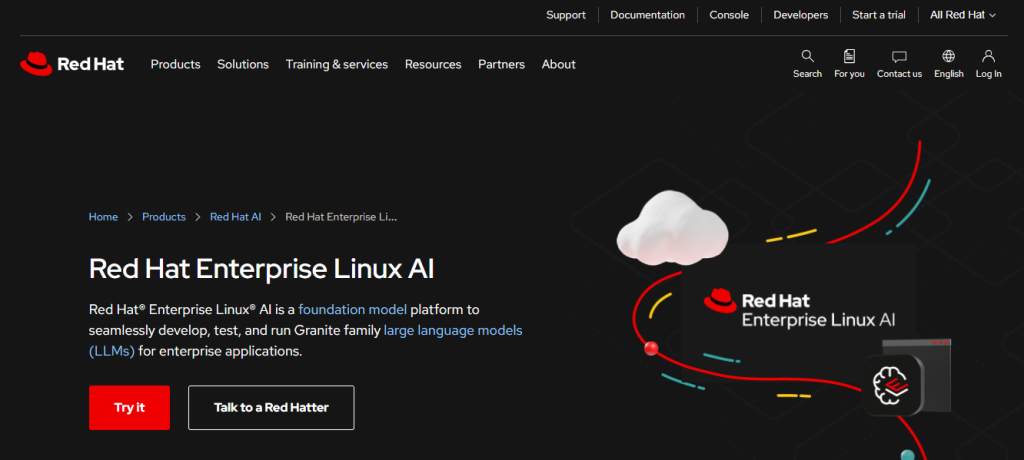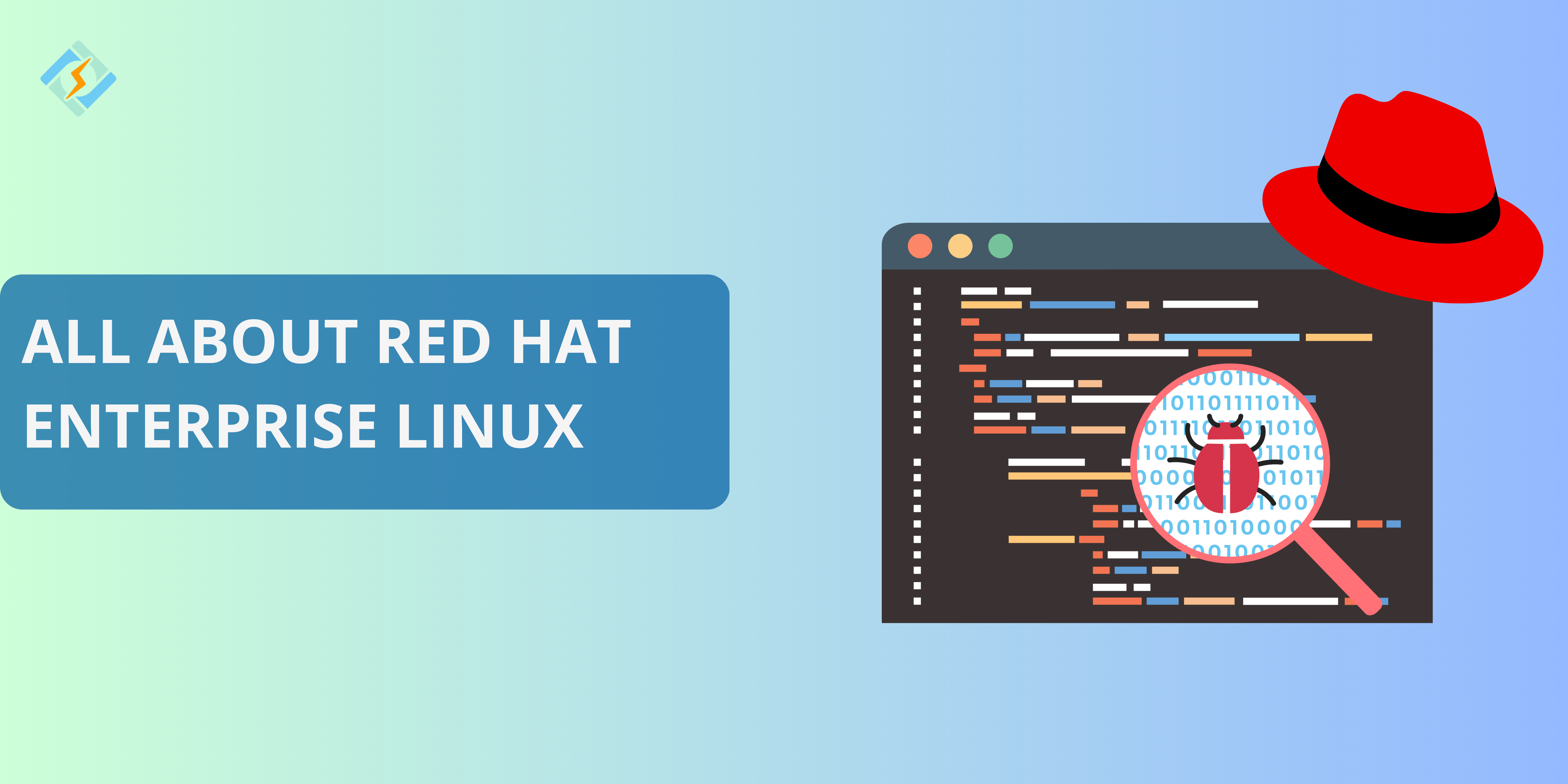Red Hat Enterprise Linux is an enterprise-level operating system that offers stable delivery, performance, and security for critical business applications. Developed by Red Hat Enterprises, RHEL is an open source software making it a super powerful and flexible choice for the modern IT infrastructure.
With its seamless features and long-term support, RHEL is widely used by organizations across multiple industries, such as finance, healthcare, and technology. It is a reliable and extensive ecosystem making it an ideal solution for deploying servers, managing workloads, and developing scalable applications.
Key Features of RHEL
“What is RHEL?” can be expertly answered by discussing its essential and key features;
1. Enterprise Grade Security
RHEL offers advanced level security features such as SELinux (Security Enhanced Linux) and firewalls to safeguard the system against potential threats. Regular updates and compliance tools ensure organizations meet stringent security standards.
2. High Performance & Scalability
Designed to handle heavy workload, RHEL ensures optimal performance across physical, virtual, and cloud environments. RHEL is highly scalable so that it could meet the needs of growing businesses and large scale infrastructures.
3. Robust Application Support
RHEL provides support for a huge array of software applications, making it compatible with diverse workloads like databases, web servers, and containerized applications.
Get exclusive access to all things tech-savvy, and be the first to receive
the latest updates directly in your inbox.
4. Long term Support & Stability
Each RHEL patch release comes with a lifecycle of 10 years, which offers long term stability and consistent performance.
5. Comprehensive Ecosystem
Red Hat’s extensive ecosystem offers benefits from certified hardware, third-party software integrations, and seamless compatibility with container platforms like OpenShift.
6. Developer & Automation Tools
Red Hat Enterprise Linux includes tools for automation, such as Ansible and resources for streamlined application deployment and management.
7. World-Class Support & Documentation
Subscribers gain access to Red Hat’s support services and extensive documentation ensuring smooth operations and faster issue resolution.
What is RHEL Licensing
RHEL offers a subscription-based licensing model that is designed to deliver enterprise-grade support, updates, and access to ecosystems.
RHEL licensing typically ensures that all the users receive regular updates, security patches, and the official technical support offered by RHEL.
- Regular Updates & Patches keep your system secure with timely fixes.
- Enterprise-grade support access expert assistance based on your subscription.
- The certified ecosystem ensures compatibility with a wide range of hardware and software.
RHEL licenses are best for businesses and developers who require a stable and supported operating system for their development. There are four basic types of RHEL licensing:
- Standard License: Basic support for enterprises.
- Premium License: Offers round-the-clock support and faster response times.
- Developer Subscription: Free access for developers to build and test.
- Cloud-Specific Licenses: Tailored for public cloud deployments.
RHEL licensing comes with subscription access for patches, updates, and certifications. It also covers on-premises, cloud, and hybrid environments. By choosing RHEL licensing, organizations gain confidence in running large workloads with a trusted platform with long-term stability for critical applications.
RHEL vs Other Linux Distributions
| Feature | RHEL | Other Linux Distributions |
| Purpose | Enterprise-focused; designed for critical business applications | General-purpose; suitable for personal, educational, or small-scale use |
| Cost | Subscription-based; requires licensing for updates and support | Mostly free; some offer paid versions for added features or support |
| Support | 24/7 professional support available through Red Hat | Community-driven support; paid support options are limited |
| Updates and Security | Regular updates, security patches, and long-term support (up to 10 years) | Updates depend on community contributions; may lack enterprise-grade SLAs |
| Ecosystem | Certified hardware, software integrations, and extensive documentation | Compatibility varies; fewer certifications and limited documentation |
| Performance | Optimized for enterprise workloads, scalability, and stability | Performance varies; may not be as stable for large-scale applications |
| Compliance | Offers compliance tools for standards like PCI DSS and HIPAA | Limited compliance tools or none available |
| Target Audience | Enterprises, businesses, and developers needing robust infrastructure | Hobbyists, small businesses, developers, and educators |
| Example Distributions | RHEL | Ubuntu, Debian, Fedora, CentOS, OpenSUSE |
Getting Started with RHEL
For both businesses and individuals who are looking into the Red Hat Enterprise Linux solutions, understanding its editions, installation, and configurations is essential. Here is an easy to follow guide for all:
Choose the Right Edition
RHEL offers customized versions for servers, workstations, and developers. The developer subscription is free for testing and learning.

Download RHEL
Visit the official website and register to download the ISO file. Ensure that your machine is compatible with the system requirements.

Install RHEL
Create a bootable USB/ DVD with the ISO file that you downloaded and follow the official installer to set up partitions, users, and basic network settings.
Activation
After completing the installation, activate your system, using the command:
subscription-manager register
Enter your credentials, such as username and password to receive updates and support.
Initial setup
Update your system with the command:
sudo yum update
Configure repositories and enable required services.
Access Support & Documentation
Fully leverage Red Hat’s extensive resources and community forums to connect with like-minded users.
What is RHEL – Conclusion
Red Hat Enterprise Linux is an enterprise grade operating system offering stability and security to develop modern IT solutions. With its subscription based model, the plans offer something for all the users, making it an ideal solution for businesses and developers. If your business is looking for a scalable and secure network, Red Hat Enterprise Linux is the way to go!
Robust features and long term support RHEL provides a solid foundation for managing critical workloads, deploying servers, and building scalable applications.
Frequently Asked Questions
1. How is RHEL different from other Linux distributions?
RHEL is tailored for enterprises with features like long-term support, certifications for enterprise applications, and advanced security tools not commonly found in community-driven Linux distributions.
2. How can I download RHEL?
You can download RHEL from the official Red Hat website by signing up for a Red Hat account.
3. What are alternatives to RHEL?
Alternatives include CentOS Stream, AlmaLinux, Rocky Linux, and other enterprise-focused Linux distributions.



